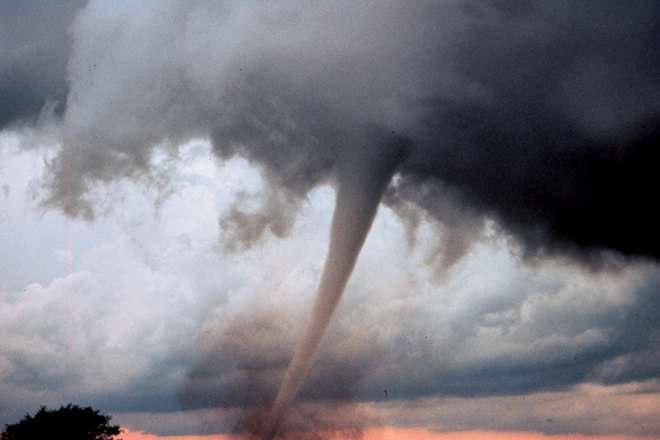Differences between a Cyclone and a Tornado. Because both cyclones and tornadoes are intense whirling storms, many people wonder if tornadoes and cyclones are the same things. They aren’t.
What is the definition of a cyclone?
Meteorologists define a cyclone as a large-scale storm caused by high winds spiralling around a central point, forcing it to move. Typically, these storms form over the South Pacific. A cyclone can travel at speeds of 20-30 miles per hour, covering a large area depending on its strength. A cyclone with a diameter of over a hundred miles is not uncommon.
The Differences Between a Cyclone and a Tornado
Formation
To begin with, cyclones and tornadoes are created in different ways. Cyclones in the tropics have a low-pressure centre around which strong winds revolve. When moist tropical air rises above the ocean and condenses, leaving less air near the surface, a cyclone forms. A low-pressure centre occurs there, forcing higher-pressure air to swirl around it in a swirling motion. The cycle repeats again, with the cyclone becoming increasingly strong each time. Tornadoes, like cyclones, are caused by the collision of cold and hot air. However, this usually occurs when cold air from the pole collides with hot tropical air.
The Tornado Alley region of the United States is said to be the optimum location for tornado formation since it is where the cold North Pole air collides with the tropical air from the Gulf of Mexico.
Occurrence Location
While we’re on the subject of Tornado Alley, it’s worth noting that the United States is home to the majority of tornadoes. Apart from Antarctica, they can form on every other continent. Cyclones require hot, moist air to form, which is why they form in the world’s tropical regions. The Pacific area is where the majority of cyclones occur.
Size
Another significant distinction between a cyclone and a tornado is the latter’s narrower width. In actuality, a tornado’s diameter is measured in yards or metres. Cyclones, on the other hand, can grow to be hundreds of kilometres in diameter!
Damage
Because cyclones are significantly larger than tornadoes, they frequently cause far more damage. In truth, cyclones have been responsible for some of the world’s worst calamities. For example, in 1839, India was hit by a cyclone that killed almost 300,000 people. The Bhola cyclone, which struck Bangladesh in 1970, claimed the lives of at least 250,000 people. In comparison, the deadliest tornado ever raged over Bangladesh in 1989, killing over 1300 people.
Occurrence Frequency
On the plus side, cyclones do not occur frequently. There are roughly 10-15 cyclones every year on average around the world. When tornadoes are present, the number is substantially higher. In fact, more than 1,200 tornadoes occur annually in the United States alone, while the overall number of tornadoes on a global scale is in the tens of thousands.
Weather
The weather that a cyclone and a tornado bring is the final distinction. Cyclones are accompanied by rain since they occur in tropical climates. Tornadoes, on the other hand, can bring severe rain, hail, and sleet with them.

